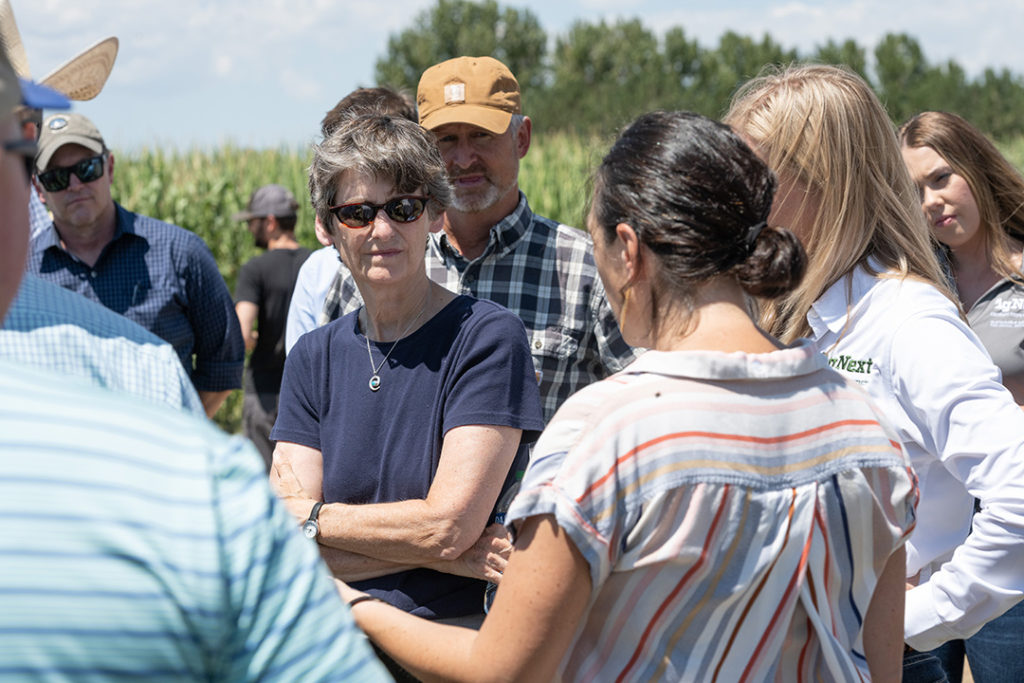
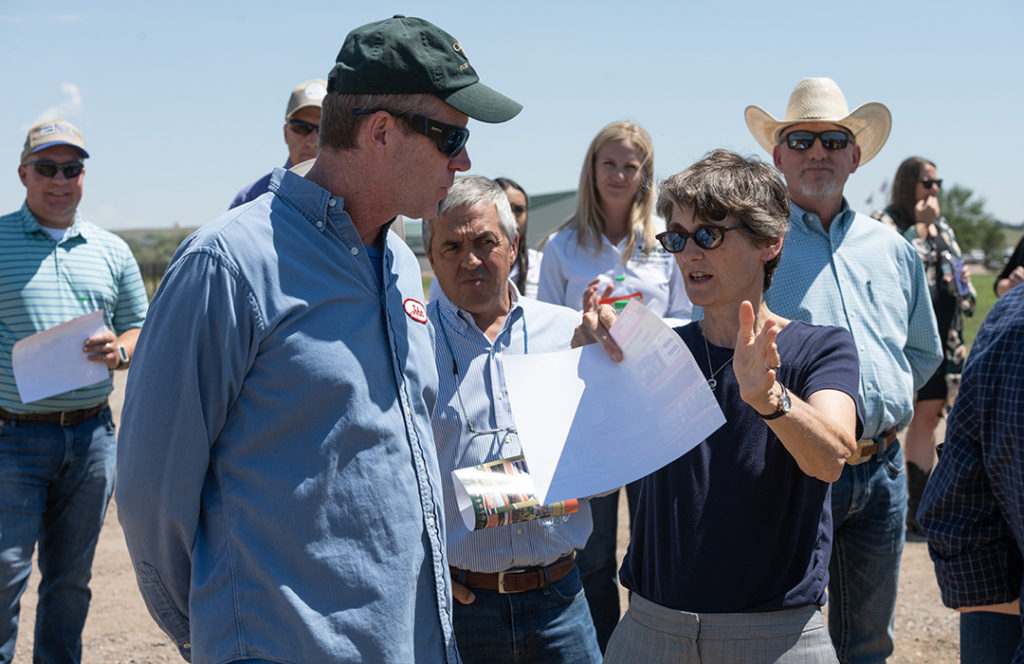
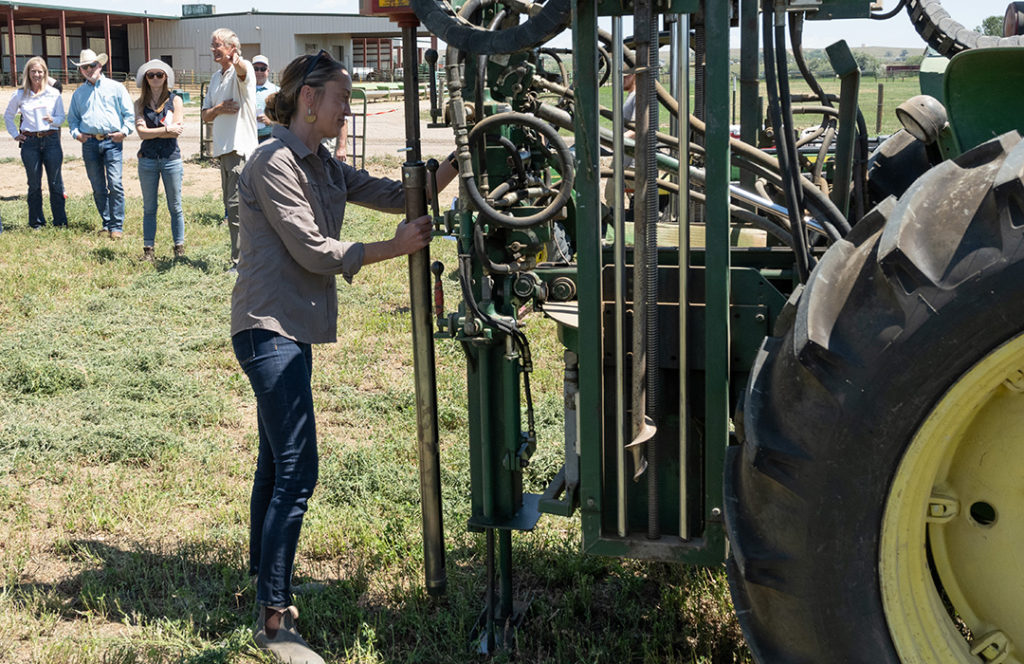
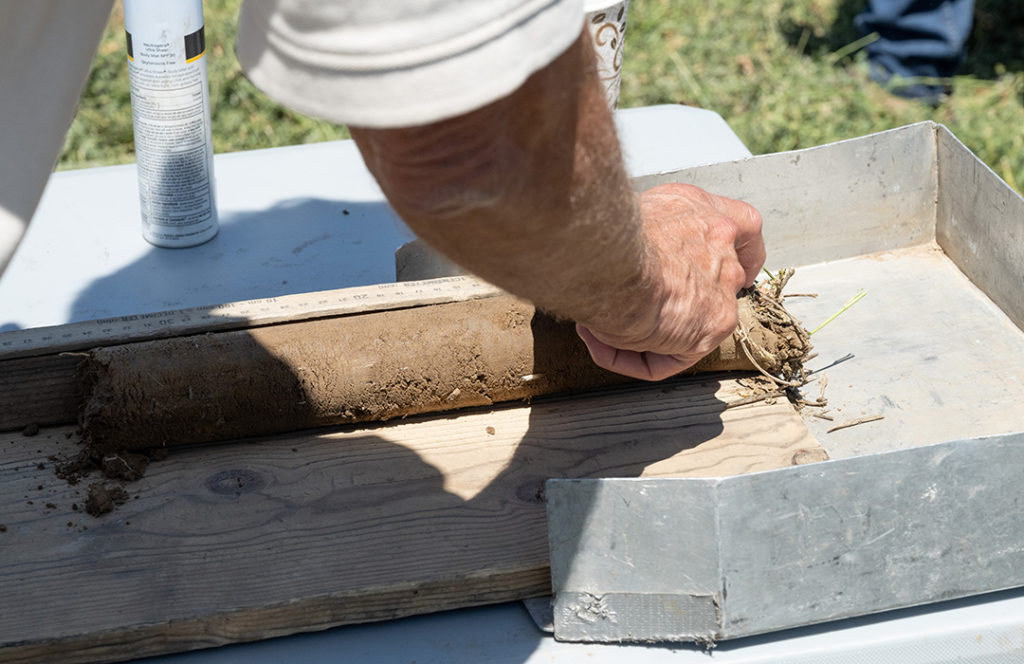
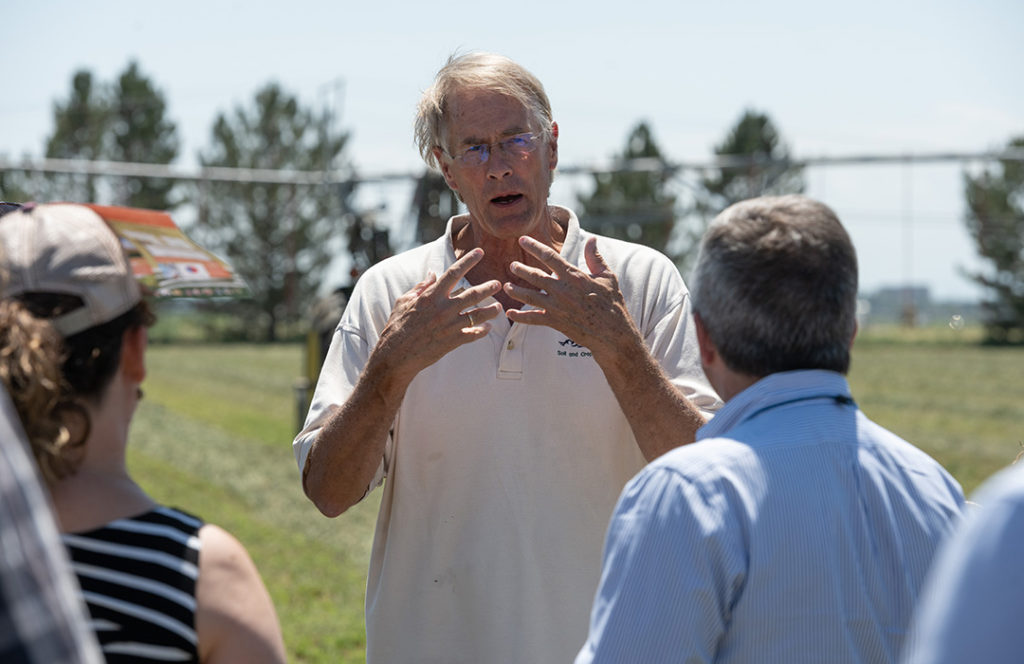
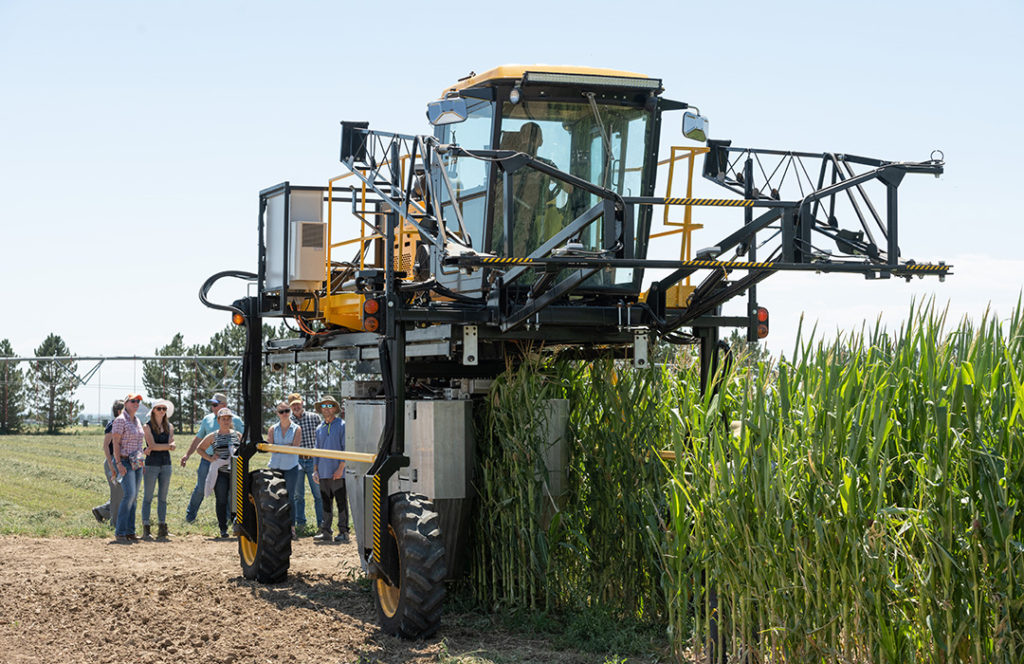
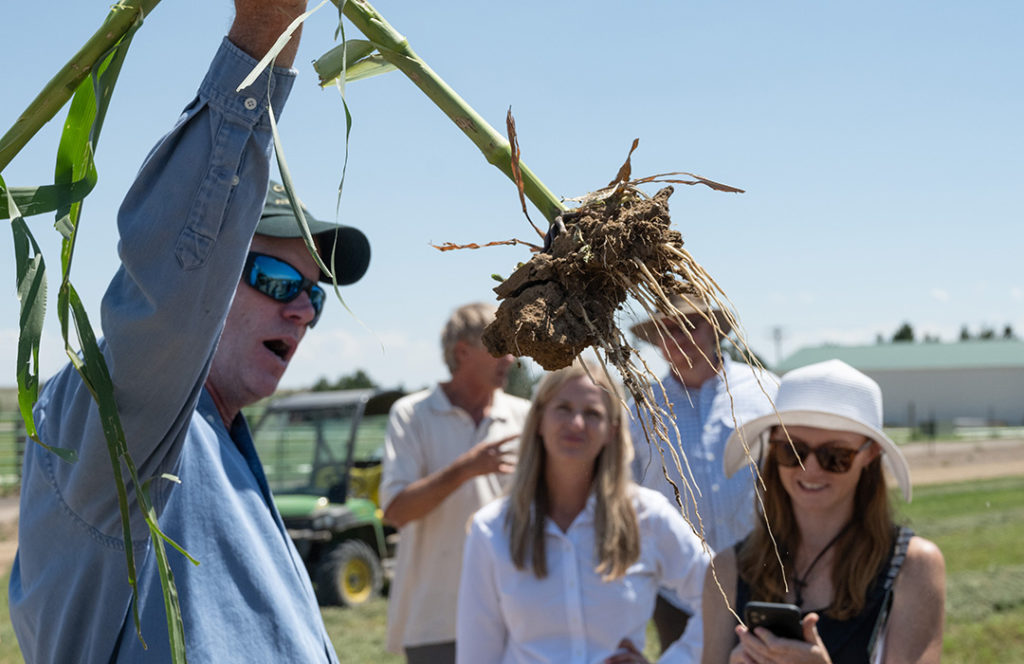

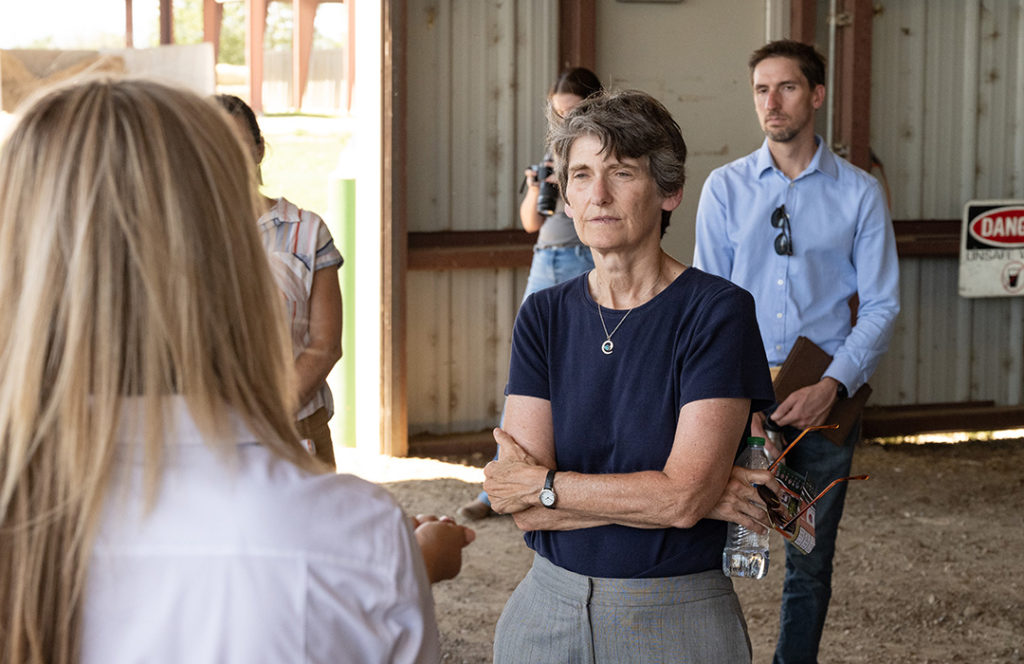

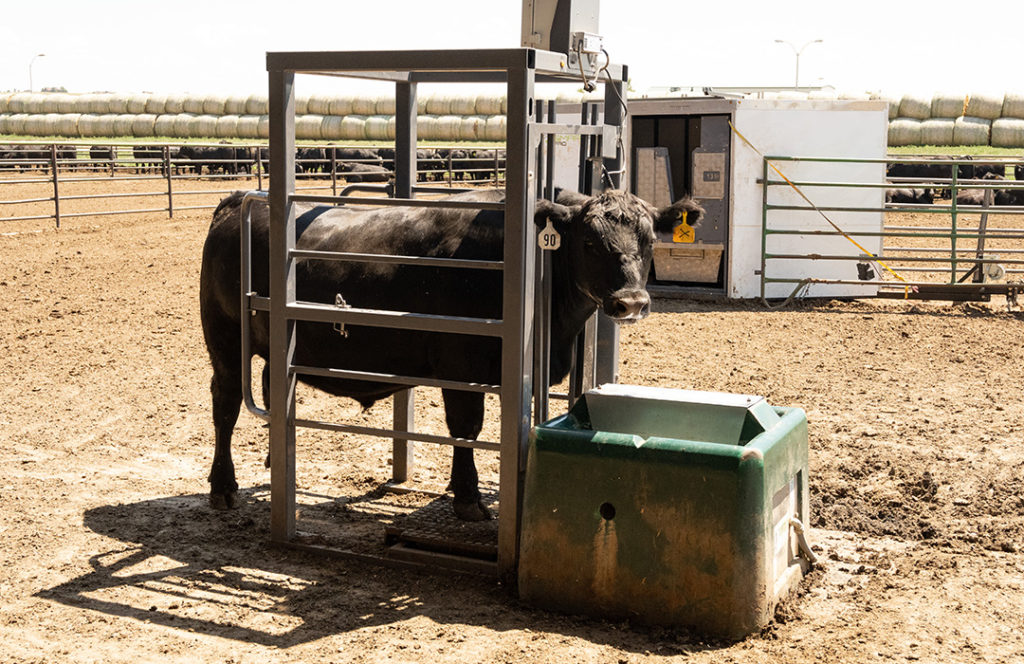
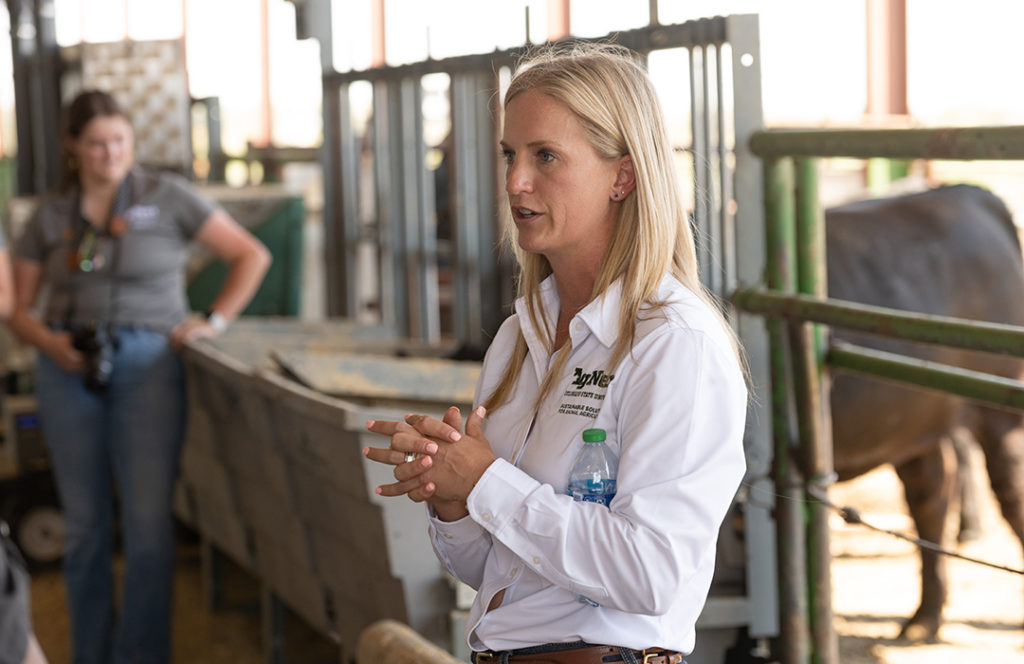
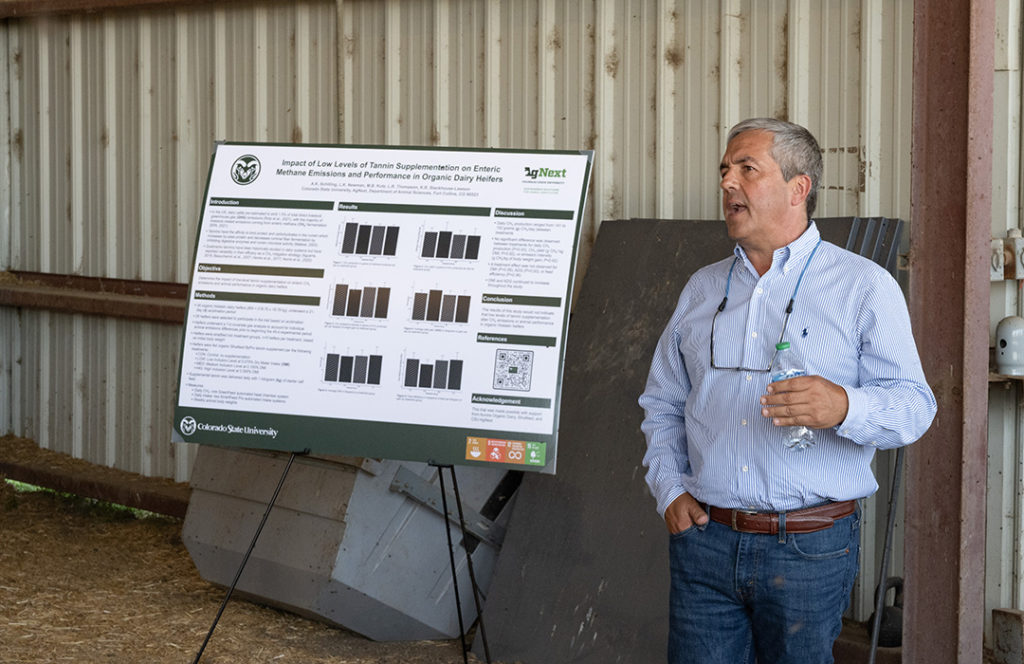
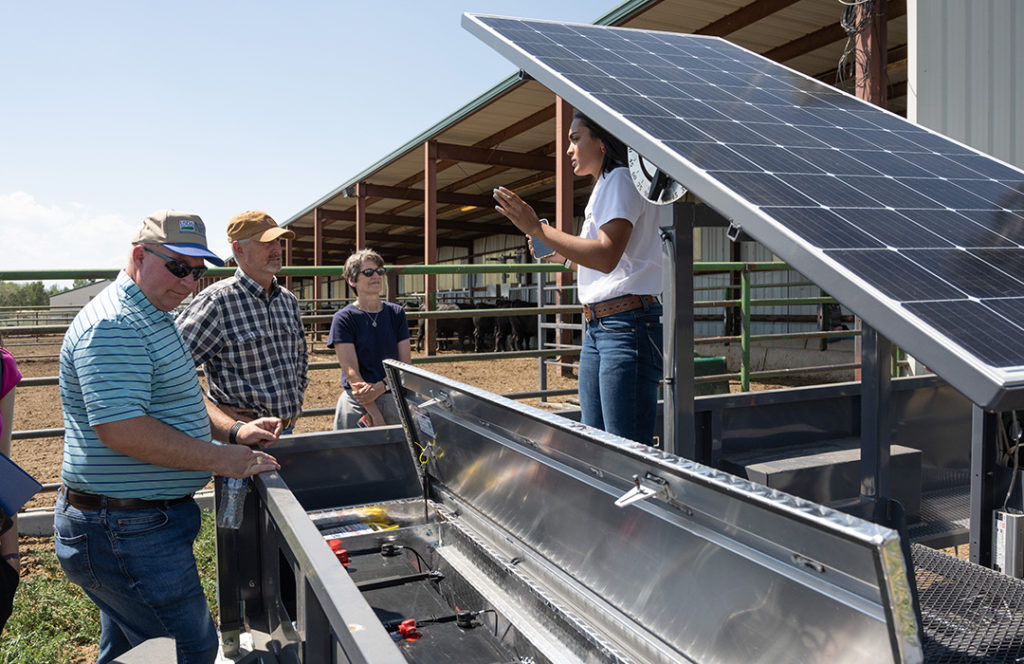
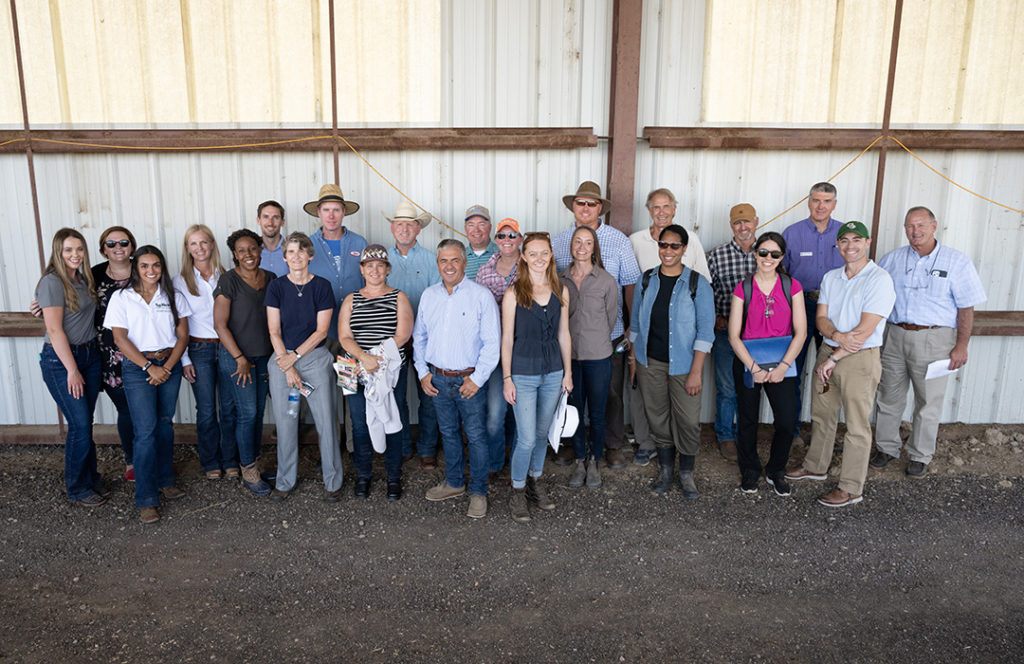
Colorado State University’s climate-smart agriculture research was on display Tuesday during a visit from U.S. Environmental Protection Agency (EPA) Deputy Administrator Janet McCabe. McCabe and other EPA staffers visited the Agricultural Research and Development Center from Washington, D.C., to learn more about the University’s commitment to advancing the science of regenerative agricultural systems and accelerating agriculture’s climate resiliency. Scientists from the Soil Carbon Solutions Center and AgNext showcased their programs’ current research related to soil health and animal agriculture.
During the visit, CSU’s Soil Carbon Solutions Center, led by executive director Jane Zelikova, presented interdisciplinary work focused on soil biogeochemistry, carbon removal, and wide-scale adoption of technologies that support agricultural sustainability and carbon sequestration. Using a mechanized soil corer and root puller, the center’s researchers demonstrated new corn varieties with deeper roots and how to collect relatively undisturbed soil and root samples to quantify changes in carbon.
AgNext, CSU’s initiative to advance sustainable solutions for animal agriculture while enhancing resiliency of the supply chain, showcased research done in partnership with academic and producer partners. The climate-smart research pens at ARDEC feature state-of-the art equipment – including GreenFeed machines and other smart technology – that helps researchers measure feed intake, weight and enteric methane emissions. Led by Kim Stackhouse-Lawson, AgNext includes the largest public research facility of its kind in the country.
The tour also included a view of ARDEC’s grazing pivot, a circular grazing plot that controls animal grazing time and space to balance available forage with animal demand, offering benefits in soil and animal health and carbon storage while maximizing water use. The AgNext team has ongoing research on the grazing pivot and in extensive grazing systems evaluating greenhouse gas emissions from cattle.